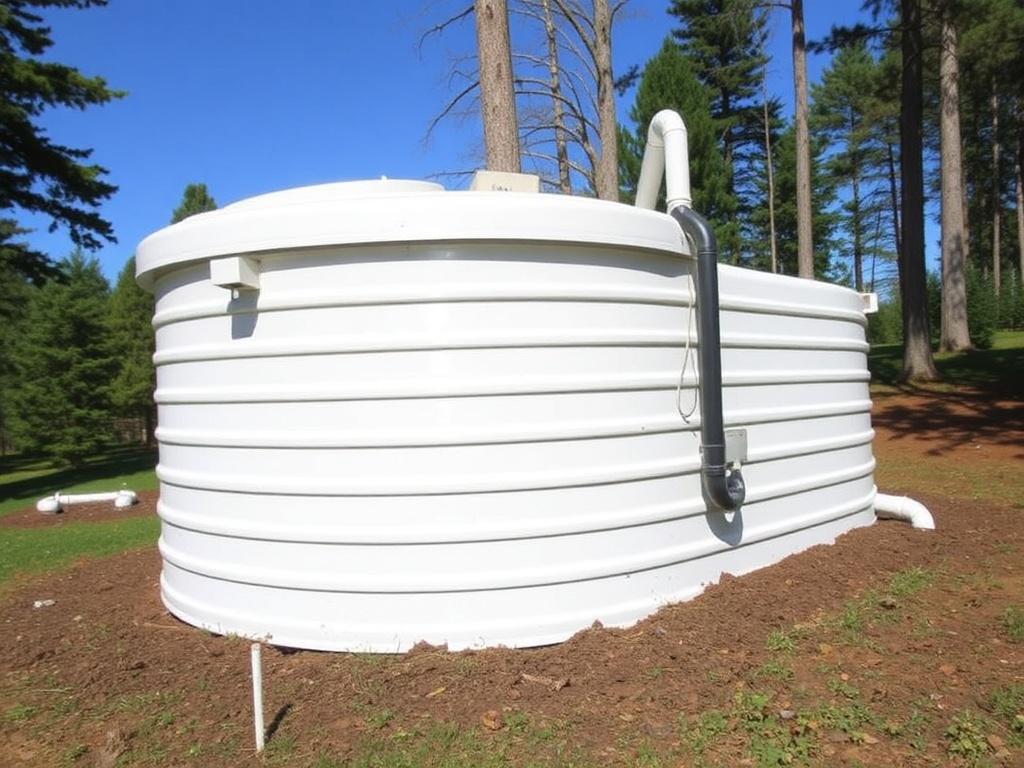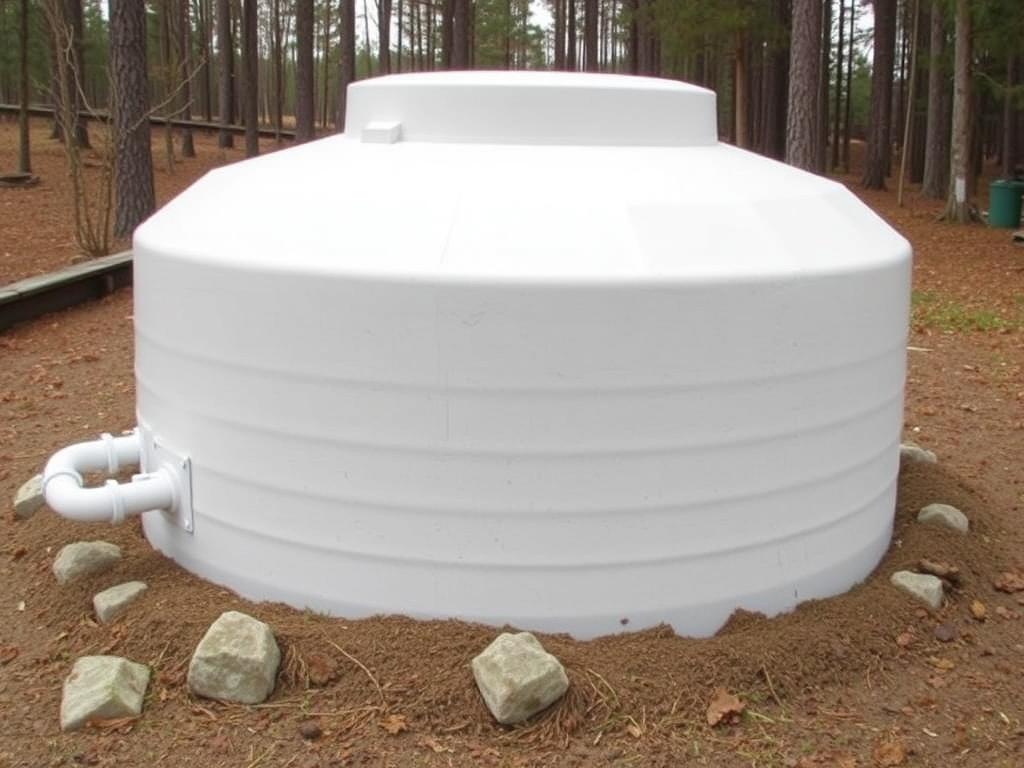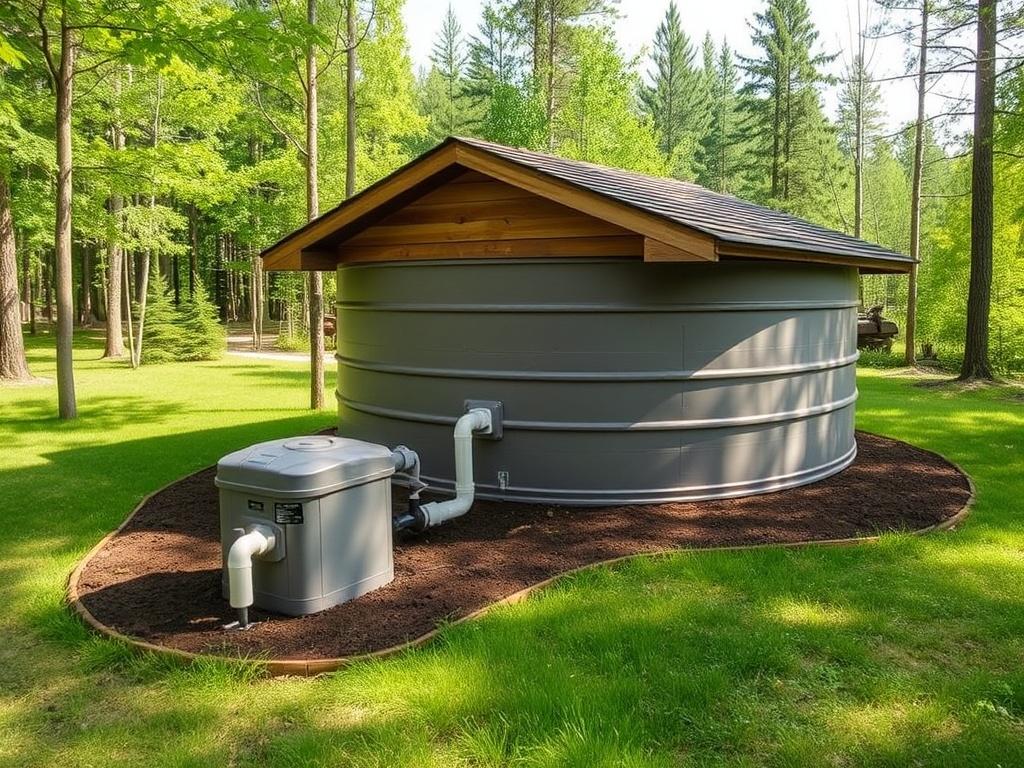If you’re planning to install a septic tank for a cabin, you’re embarking on an important step to ensure your getaway spot has a reliable and efficient waste management system. Whether your cabin is tucked away in the woods, on a lakeside property, or simply off the grid, a well-installed septic tank can make all the difference in convenience and environmental safety. Septic systems, though often overlooked, are vital for cabins without access to municipal sewage systems. They handle wastewater right on-site, which means not only must they be positioned correctly, but installed with care and knowledge. This article takes you through essential installation tips, practical advice, and what to expect so you can confidently manage your septic tank setup.
- Understanding the Need for a Septic Tank at Your Cabin
- Pre-Installation Considerations
- Site Evaluation and Soil Testing
- Local Permits and Regulations
- Cabin Usage and Tank Size
- Choosing the Right Septic Tank for Your Cabin
- Materials: Concrete, Plastic, or Fiberglass
- Septic Tank Design
- Step-by-Step Installation Tips
- 1. Locate the Tank and Drain Field Properly
- 2. Excavate the Area
- 3. Prepare a Stable Bedding
- 4. Place the Tank Carefully
- 5. Connect Pipes Securely
- 6. Install the Drain Field
- 7. Backfill with Care
- 8. Test the System
- Maintenance Tips to Ensure Longevity
- Common Challenges and Troubleshooting
- Poor Drainage or Backups
- Odors Around the Tank or Cabin
- Frozen Pipes and Tanks in Winter
- Cost Considerations for Septic Tank Installation
- Eco-Friendly Septic Solutions for Cabins
- Composting Toilets and Alternative Waste Systems
- Aerobic Treatment Units (ATUs)
- Gray Water Recycling
- Final Thoughts on Installing a Septic Tank for Your Cabin
- Conclusion
Understanding the Need for a Septic Tank at Your Cabin

Before diving into the nuts and bolts of septic tank installation tips, it’s helpful to know why a septic tank is particularly important for cabins. Cabins often sit in remote locations where connecting to a centralized sewer system is impossible or prohibitively expensive. A septic tank treats wastewater onsite, breaking down solids and filtering effluent through the soil, protecting your cabin’s surroundings from contamination.
Many cabin owners choose septic tanks because they offer low operating costs, durability, and independence from municipal infrastructure. However, improper installation can lead to leaks, blockages, or environmental hazards, so taking installation seriously is key to long-term success and peace of mind.
Pre-Installation Considerations

Before digging begins, there are critical steps to ensure your septic system will work well for your cabin’s specific needs:
Site Evaluation and Soil Testing
A professional site evaluation is essential. This includes a soil test (percolation test) to check how well your soil drains. Soil type directly impacts how your drain field works and influences where you can place your septic tank. For example, sandy soils drain well but may require deeper trenches, while clay soils drain slowly and may require a larger drain field.
Local Permits and Regulations
Check your local building codes and environmental regulations before installation. Each region has specific requirements about septic tank sizes, setbacks from water sources, and placement. Failing to meet these can lead to fines or system failure. Getting the necessary permits ensures that your installation is legal and meets health and safety standards.
Cabin Usage and Tank Size
Think about how often the cabin is used and how many people it accommodates. A weekend retreat with two people requires a smaller tank than a family cabin heavily used year-round. To give you an idea:
| Number of Bedrooms | Tank Size (Gallons) | Typical Usage |
|---|---|---|
| 1-2 | 750 – 1,000 | Low to moderate |
| 3-4 | 1,000 – 1,250 | Moderate to high |
| 5+ | 1,250+ | High |
Choosing the right tank size from the beginning saves money and prevents costly upgrades.
Choosing the Right Septic Tank for Your Cabin
Septic tanks come in different materials and designs. Each has pros and cons depending on environmental conditions, budget, and cabin use.
Materials: Concrete, Plastic, or Fiberglass
– Concrete tanks: Very durable and heavy, resist crushing but require machinery to install due to weight.
– Plastic tanks: Lightweight, easy to install, and resistant to cracking, but may deform under heavy soil loads.
– Fiberglass tanks: Also lightweight and durable, resistant to corrosion, but can be expensive.
For cabins located in areas prone to freezing, non-metal tanks—usually plastic or fiberglass—are preferred because they handle frost well.
Septic Tank Design
Most cabins benefit from a traditional two-chamber septic tank with a drain field. Some modern systems include aerobic treatment units, which use oxygen to break down waste faster and are suitable for sensitive environments but require electricity and more maintenance.
Step-by-Step Installation Tips

Once you have your plan, tank chosen, and permits in hand, it’s time to install! Here are the key steps to keep in mind.
1. Locate the Tank and Drain Field Properly
The septic tank should be placed downhill or at least level with your cabin to use gravity flow rather than pumps. It must be at a safe distance from water wells, streams, and the cabin itself. A typical setback is 50 feet from wells and 10-20 feet from the cabin.
2. Excavate the Area
Excavate a hole large enough for the tank, including room for backfill and inspection clearances. The bottom should be level and stable to prevent tank shifting.
3. Prepare a Stable Bedding
Lay a 4-inch layer of sand or fine gravel at the bottom of the hole. This stabilizes the tank and helps with drainage beneath it.
4. Place the Tank Carefully
Using machinery ensures safe lowering of the septic tank into place without damage. Align all inlet and outlet pipes properly.
5. Connect Pipes Securely
The inlet pipe from the cabin and the outlet pipe to the drain field need tight fittings to prevent leakage and odor escape. Use appropriate pipe materials approved for septic use.
6. Install the Drain Field
After the tank is in place, trenches for the drain field are dug according to design specifications. Gravel and perforated pipes are buried in these trenches to disperse effluent.
7. Backfill with Care
Refill soil carefully around the tank and pipes, avoiding large rocks or debris that could damage the system. Compact soil gently but firmly.
8. Test the System
Once installation is complete, a professional should test the system for leaks and proper flow. This may include water testing or inspection with cameras.
Maintenance Tips to Ensure Longevity
Installing the system is just the beginning. Proper maintenance keeps your septic tank functioning for years.
- Regular Pumping: Have your tank pumped every 3-5 years to remove sludge buildup.
- Water Usage: Conserve water inside the cabin to reduce strain on the system.
- Avoid Harsh Chemicals: Using mild soaps and avoiding harsh cleaners protect the bacterial action inside the tank.
- Protect the Drain Field: Keep heavy machinery and vehicles off the drain field to prevent soil compaction.
- Monitor Plant Growth: Avoid planting deep-rooted trees or bushes near the septic system.
Common Challenges and Troubleshooting
While septic tanks are reliable, cabin owners sometimes encounter issues. Here are a few common problems and tips on how to address them.
Poor Drainage or Backups
This often means the drain field is saturated or the tank is full. Pumping the tank and reducing water use can help. Sometimes, soil conditions have degraded, requiring redesign.
Odors Around the Tank or Cabin
Leaks, cracked pipes, or improper venting often cause foul smells. Inspections will pinpoint leaks or broken covers.
Frozen Pipes and Tanks in Winter
For cabins in cold climates, insulating septic pipes and using septic tank heaters can prevent freeze-ups.
Cost Considerations for Septic Tank Installation
Cost varies widely depending on tank type, soil conditions, and local regulations. Here’s a rough breakdown:
| Component | Estimated Cost Range (USD) |
|---|---|
| Septic Tank (Materials) | 1,000 – 3,000 |
| Excavation | 500 – 1,500 |
| Drain Field Installation | 1,000 – 3,000 |
| Permits and Inspections | 200 – 1,000 |
| Total Installation | 2,700 – 8,500 |
Budgeting ahead and obtaining multiple quotes will help avoid unexpected surprises.
Eco-Friendly Septic Solutions for Cabins
With growing environmental awareness, eco-friendly septic options are becoming popular among cabin owners. These systems minimize water usage, improve effluent quality, and reduce impact on surrounding ecosystems.
Composting Toilets and Alternative Waste Systems
Some cabins use composting toilets to reduce wastewater dramatically. While they may require some maintenance and a learning curve, they can eliminate or reduce the need for large septic tanks.
Aerobic Treatment Units (ATUs)
ATUs add oxygen to the waste treatment process, leading to cleaner effluent that’s safer for sensitive environments such as near lakes or streams.
Gray Water Recycling
Capturing and reusing gray water (from sinks and showers) reduces the load on septic tanks and conserves water.
Final Thoughts on Installing a Septic Tank for Your Cabin
Installing a septic tank for a cabin is a rewarding project that ensures your retreat is comfortable, hygienic, and environmentally sound. By carefully selecting the right tank size and type, following installation tips, and maintaining your system well, you can enjoy years of trouble-free use. Always respect local codes, consult professionals when needed, and keep the long-term care of your septic tank in mind. With proper planning and careful execution, your septic system will work silently in the background, giving you the freedom to relax and enjoy your cabin getaway without worry.
Conclusion
Setting up a septic tank for a cabin isn’t just a technical task—it’s an essential part of creating a functional home away from home. Taking the time to understand your site, selecting an appropriate septic tank, following expert installation tips, and prioritizing maintenance will pay off with a system that works efficiently for years. Whether you use your cabin seasonally or full-time, the septic system you install should align with your needs and environmental considerations. By keeping these tips in mind and engaging with trusted professionals, you can enjoy your cabin’s peaceful surroundings without the headache of septic troubles. Thoughtful planning today leads to stress-free living tomorrow, making your cabin experience truly enjoyable.
Помогла вам статья?






